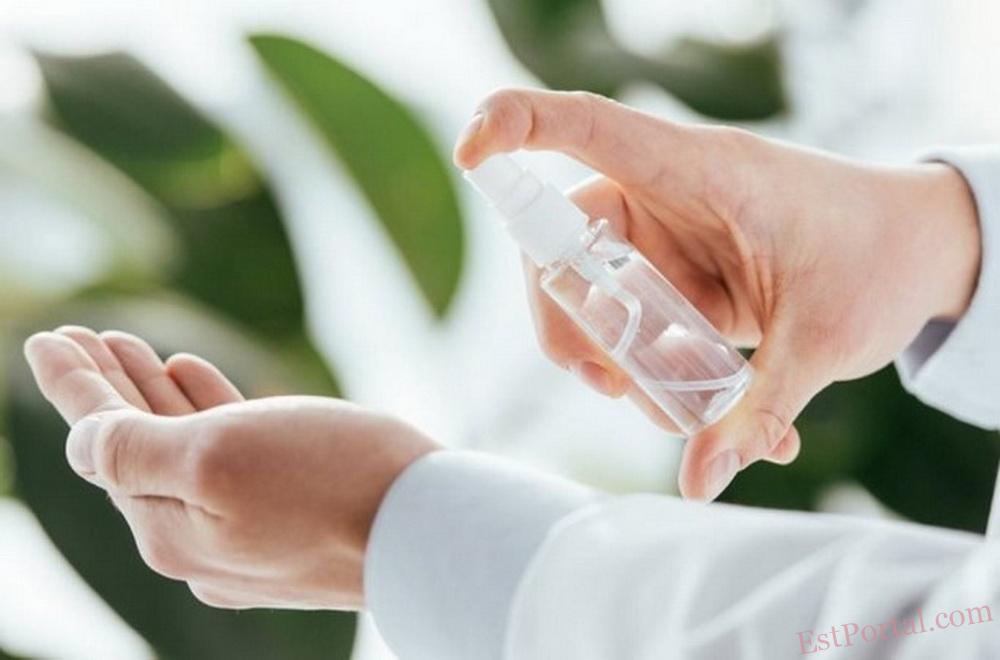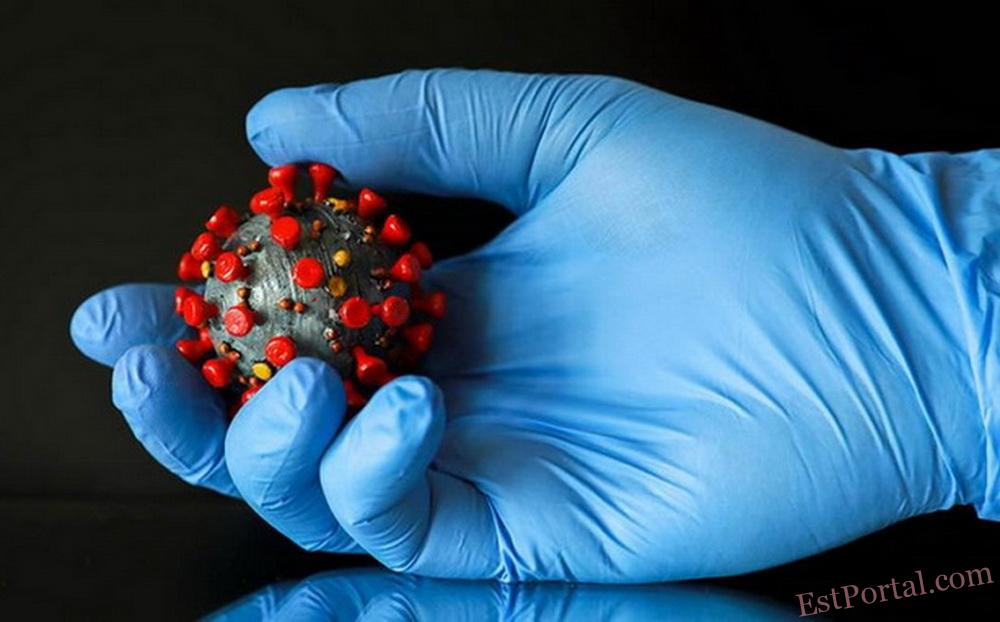
Hand Sanitizers: Mechanism of Action and Effectiveness Against Coronaviruses
The emergence of new pathogens, whether bacterial or viral, always poses a challenge for scientists and healthcare professionals worldwide. One of the most effective means of counteraction has been hand sanitizers. A relevant example is the viral disease COVID-19, which the World Health Organization recognized as a global pandemic at the beginning of 2020.
Among the effective methods of preventing infection and the spread of the virus, frequent and thorough hand hygiene has been acknowledged. Both among the general population and healthcare workers, alcohol-based hand sanitizers have become an effective alternative to traditional handwashing with soap and water. Today, alcohol-based hand sanitizers are part of protocols aimed at limiting the spread of bacteria and viruses [1,2]. Alcohol-based sanitizers are now available in various forms (gels, sprays) and with different compositions. Given their growing popularity during the pandemic, it is important to understand which types of sanitizers are truly effective against this particular pathogen.
Structure of viruses and bacteria
Viruses are infectious agents of relatively simple organization with two minimally required structural components. First of all, viruses contain genetic material: DNA or RNA. The genetic information may be represented by a single-stranded or double-stranded molecule. To protect and encapsulate the viral genetic material, there is a protein shell, or protein capsid. Viruses are also classified depending on whether they possess a lipid envelope. Although the composition of viruses is similar to that of all living cells (proteins, lipids, genetic material), for viruses, reproduction is only possible within a host cell — outside the cell, viruses do not show any signs of life.
Bacteria are single-celled living organisms that, unlike viruses, can usually live outside the host organism. The genetic material of bacteria is freely located inside the cell, and just like in viruses, bacteria lack a defined nucleus. Bacterial cells contain a relatively large number of structures, including the inner cell membrane and the outer cell wall, although the structure of certain species may differ from the classical one.
Peptidoglycan is a component of the outer cell wall of bacteria; it is a polymer consisting of sugars and amino acids. The thickness of the peptidoglycan layer varies among different bacterial species. The thickness of this layer determines how bacteria will stain in the Gram method: the thicker the peptidoglycan layer, the better the bacterium stains pink, which makes it Gram-positive. Bacteria that do not contain peptidoglycan at all are grouped as “atypical” bacteria.
Ingredients of hand sanitizers
There are two main groups of sanitizers:
- alcohol-based sanitizers;
- sanitizers based on cleansing components other than alcohol.
Most often, instead of alcohol, sanitizers of the second group use benzalkonium chloride, a quaternary ammonium compound that is frequently applied as a disinfectant [3]. Disinfectants based on benzalkonium chloride were long considered less irritating than alcohol-based disinfectants; however, recent studies confirm their significant potential in provoking contact dermatitis [4]. Although alcohol-based sanitizers can indeed irritate the skin, they are used most frequently due to their effectiveness in preventing the spread of infectious agents and their economic advantage [5].
Alcohol-based sanitizers may contain ethanol, isopropyl alcohol, n-propanol, or their combinations [7], water, as well as excipients and sometimes humectants. Sanitizer formulations with an alcohol content ranging from 60–95% by volume are the most common and are considered the most effective. Humectants in the sanitizer formula prevent skin from drying out, while excipients maintain the stability and effectiveness of the formula over time, reducing the rate of alcohol evaporation and thereby increasing the biocidal activity of the sanitizer [6].
Mechanism of action of alcohols on bacterial cells
N-propanol is often used as an alcohol component in biocidal substances [7]. The exact mechanism of the antimicrobial properties of alcohols has not been fully studied; however, their action is most likely related to the disruption of bacterial membrane integrity, inhibition of protein synthesis [8], and/or protein denaturation [7]. For antibacterial properties, the optimal concentration of alcohols ranges from 60–90% [9]. Concentrations above 90% show less pronounced bactericidal activity [9]. Water is essential in the process of protein denaturation. It should also be noted that alcohols act against bacterial cells that are undergoing active metabolic processes and division, but not against their spores [10].
Mechanism of action of alcohols on viral particles
All three components of viral particles — the lipid envelope (if present), the protein capsid, and the genetic material itself — are targets for the action of alcohol-based sanitizers [7]. Considering that all these components of the viral particle are essential for the viral life cycle (attachment to host cells, penetration, biosynthesis, maturation, and cell lysis), and therefore critical for the further transmission of the virus from host to host, any alteration in the structure or functionality of one of these components may reduce the infectivity of the virus.
Compared to the mechanism of alcohol action on bacteria, less is known about their effectiveness against viruses. It has been demonstrated that ethanol acts more effectively on viral particles and has a broader spectrum of activity than other alcohols, particularly propanols. High concentrations of ethanol are highly effective against viruses with a lipid envelope (which includes the majority of clinically significant viruses, such as coronaviruses) [11]. It should be noted that the protein capsid of viruses is relatively resistant, so most sanitizers remain ineffective against viruses that lack a lipid envelope [12].
In general, the concentration of ethanol required for virus inactivation is the same as that for bacterial cell inactivation. However, studies show that ethanol at a concentration of 70% can effectively counteract a broad spectrum of viruses [13].
Due to the structural similarity of the COVID-19 pathogen with previously studied representatives, information about the effectiveness of sanitizers in preventing the spread of the disease can be extrapolated.
The Centers for Disease Control and Prevention recommend washing hands with soap and water whenever possible, and using sanitizers only when this is not feasible [14]. This is because, in addition to the chemical impact on infectious agents, mechanical removal by water flow from the skin surface is also possible. However, studies show equal effectiveness of sanitizers and antimicrobial soap in reducing the number of potentially pathogenic lipid-enveloped viruses in suspension [11,15,16]. At the same time, it should be remembered that frequent handwashing with soap and hot water can remove the natural lipid layer from the skin surface, leading to dryness, irritation, and cracking, which increases the likelihood of pathogens entering the body. To ensure protection against such consequences, sanitizers should contain formulations with humectants, which help moisturize the skin and prevent dryness [17].
Today, the market offers sanitizers in various forms: foam, spray, or gel. Studies have not revealed any difference in coverage (and, accordingly, effectiveness) between different types of products [18,19]. However, a significant reduction in coverage was observed when the product was applied in insufficient amounts (less than 2 ml). There are also differences in tactile sensations when using sanitizers of different textures. In particular, consumer reviews indicate that foam sanitizers take longer to absorb, which leads to applying smaller amounts and thus reducing coverage. Gel texture is perceived by consumers as more attractive due to its ability to absorb quickly, the feeling of soft and moisturized skin after use, and its neutral fragrance [20]. However, compliance is influenced by many factors: the presence of additional ingredients (such as colorants and fragrances), moisturizing components, packaging volume, and others.
Conclusions
The infectious agent that causes COVID-19 — a disease that has now reached the scale of a global pandemic — can be effectively inactivated through proper hand hygiene. Thus, hand sanitizers remain an indispensable tool in the prevention of COVID-19.
References:
- Pittet D, Allegranzi B, Boyce J. The World Health Organization guidelines on hand hygiene in health care and their consensus recommendations. Infect Control Hosp Epidemiol. 2009;30:611–622.
- Boyce JM, Pittet D, Healthcare Infection Control Practices Advisory Committee. Society for Healthcare Epidemiology of America. Association for Professionals in Infection Control. Infectious Diseases Society of America. Hand Hygiene Task Force. Guideline for hand hygiene in health-care settings: recommendations of the healthcare infection control practices advisory committee and the HICPAC/SHEA/APIC/IDSA hand hygiene task force. Infect Control Hosp Epidemiol. 2002;23 (12 Suppl):S3–40.
- Gold NA, Avva U. Alcohol Sanitizer. StatPearls Publishing; 2018. Available at: http://www.ncbi.nlm.nih.gov/pubmed/30020626. Accessed July 10,2020.
- Wentworth AB, Yiannias JA, Davis MDP, Killian JM. Benzalkonium chloride: a known irritant and novel allergen. Dermatitis. 2016;27:14–20.
- Fleur P la, Jones S. Non-alcohol based hand rubs: a review of clinical effectiveness and guidelines [Internet]. CADTH Rapid Response Report. 2017. Available at: http://www.ncbi.nlm.nih.gov/pubmed/29266912. Accessed July 10, 2020.
- Bush LW, Benson LM, White JH. Pig skin as test substrate for evaluating topical antimicrobial activity. J Clin Microbiol. 1986;24:343–348.
- Mcdonnell G, Russell AD. Antiseptics and disinfectants: activity, action, and resistance. Clin Microbiol Rev. 1999;12:147–179. American Society for Microbiology (ASM).
- Haft RJF, Keating DH, Schwaegler T, et al. Correcting direct effects of ethanol on translation and transcription machinery confers ethanol tolerance in bacteria. Proc Natl Acad Sci USA. 2014;111:E2576.
- Morton HE. The relationship of concentration and germicidal efficiency of ethyl alcohol. Ann N Y Acad Sci.. 1950;53:191–196.
- Thomas P. Long-term survival of bacillus spores in alcohol and identification of 90% ethanol as relatively more spori/bactericidal. Curr Microbiol. 2012;64:130–139.
- Kampf G. Efficacy of ethanol against viruses in hand disinfection. J Hosp Infect. 2018;98:331–338. W.B. Saunders Ltd.
- Dastider D, Jyoti Sen D, Kumar Mandal S, Bose S, Ray S, Mahanti B. Hand sanitizers bid farewell to germs on surface area of hands. Eur J Pharm Med Res. 2020;7:648–656.
- Sattar SA, Abebe M, Bueti AJ, Jampani H, Newman J, Hua S. Activity of an alcoholbased hand gel against human adeno-, rhino-, and rotaviruses using the fingerpad method. Infect Control Hosp Epidemiol. 2000;21:516–519.
- Gerberding JL, Director David Fleming MW, Snider DE, et al. Morbidity and mortality weekly report guideline for hand hygiene in health-care settings recommendations of the healthcare infection control practices advisory committee and the HICPAC/SHEA/APIC/IDSA Hand Hygiene task force centers for disease control and prevention. MMWR 2002;51 (No. RR-16):2-29.
- Fendler EJ, Ali Y, Hammond BS, Lyons MK, Kelley MB, Vowell NA. The impact of alcohol hand sanitizer use on infection rates in an extended care facility. Am J Infect Control. 2002;30:226–233.
- Steinmann J, Paulmann D, Becker B, Bischoff B, Steinmann E, Steinmann J. Comparison of virucidal activity of alcohol-based hand sanitizers versus antimicrobial hand soaps in vitro and in vivo. J Hosp Infect. 2012;82:277–280.
- Lauharanta J, J, Sarna S, P. Prevention of dryness and eczema of the hands of hospital staff by emulsion cleansing instead of washing with soap. J Hosp Infect. 1991;17:207–215.
- Larson EL, Cohen B, Baxter KA. Analysis of alcohol-based hand sanitizer delivery systems: efficacy of foam, gel, and wipes against influenza A (H1N1) virus on hands. Am J Infect Control. 2012;40:806–809.
- Grayson ML, Melvani S, Druce J, et al. Efficacy of soap and water and alcohol-based hand_rub preparations against live H1N1 influenza virus on the hands of human volunteers. Clin Infect Dis. 2009;48:285–291.
- Greenaway RE, Ormandy K, Fellows C, Hollowood T. Impact of hand sanitizer format (gel/foam/liquid) and dose amount on its sensory properties and acceptability for improving hand hygiene compliance. J Hosp Infect. 2018;100: 195–201.
Evgeniy EROSHKIN — MD, Doctor of Medical Sciences, Dermatovenereologist (Ukraine)









